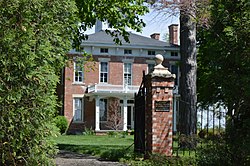
This is a list of sites in Minnesota which are included in the National Register of Historic Places. There are more than 1,700 properties and historic districts listed on the NRHP; each of Minnesota's 87 counties has at least 2 listings. Twenty-two sites are also National Historic Landmarks.

The Jarrell Plantation State Historic Site is a former cotton plantation and state historic site in Juliette, Georgia, United States. Founded as a forced-labor farm worked by John Jarrell and the African American people he enslaved, the site stands today as one of the best-preserved examples of a "middle class" Southern plantation. The Jarrell Plantation's buildings and artifacts all came from the Jarrell family, who farmed the land for over 140 years. Located in the red clay hills of the Georgia piedmont, It was added to the National Register of Historic Places in 1973. It is a Georgia state park in Jones County.
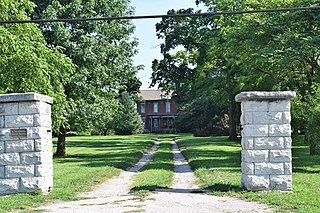
The Henry T. Rainey Farm, also known as Walnut Hall Estate is a historic farm and wedding venue located on the north side of Illinois Route 108 in Greene County, Illinois, east of Carrollton. The main farmhouse, known as Walnut Hall, was built in 1868-70 by settler Luman Curtius. The red brick house features Greek Revival and Italianate influences. Politician Henry Thomas Rainey bought the farm in 1909. Rainey served in the U.S. House of Representatives from 1903 to 1921, and again from 1923 to his death in 1934; during his last two years in office, he was Speaker of the House. As Speaker of the House, Rainey presided over the passage of New Deal legislation during President Franklin D. Roosevelt's Hundred Days; as a representative, he promoted causes such as environmental conservation and agricultural aid programs. In 2020, Brittany and Bobby Weller acquired the property, converting it into an all-inclusive wedding venue which opened the following year.
The C. H. Moore Homestead, in Clinton, Illinois, is one of two Registered Historic Places in DeWitt County. The other, the Magill House, was added to the Register in 2003. CH Moore Homestead DeWitt County Museum was added in 1979.

The F. F. Tomek House, also known as The Ship House or as the Ferdinand Frederick and Emily Tomek House, is a historic house in Riverside, Illinois. It is a prominent example of Prairie School design by Frank Lloyd Wright. Designed in 1904 and construction finished in 1906, the Tomek House is a well-preserved example of the style. In addition to being a good example of the Prairie style, the Tomek house documents the development of the style, which reached its clearest expression in Wright's Robie House in 1908. It is included in the Riverside Historic District and was declared a National Historic Landmark in 1999.

List of the National Register of Historic Places listings in Mercer County, New Jersey

This is a list of the National Register of Historic Places listings in Anoka County, Minnesota. It is intended to be a complete list of the properties and districts on the National Register of Historic Places in Anoka County, Minnesota, United States. The locations of National Register properties and districts for which the latitude and longitude coordinates are included below, may be seen in an online map.
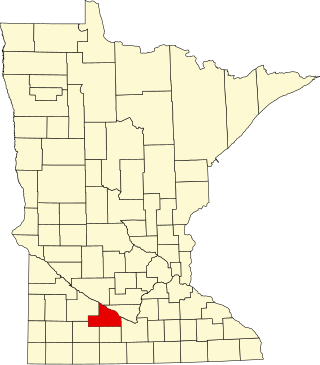
This is a list of the National Register of Historic Places listings in Brown County, Minnesota. It is intended to be a complete list of the properties and districts on the National Register of Historic Places in Brown County, Minnesota, United States. The locations of National Register properties and districts for which the latitude and longitude coordinates are included below, may be seen in an online map.

This is a list of the National Register of Historic Places listings in Clay County, Minnesota. It is intended to be a complete list of the properties and districts on the National Register of Historic Places in Clay County, Minnesota, United States. The locations of National Register properties and districts for which the latitude and longitude coordinates are included below, may be seen in an online map.

Ulery Mill was a historic building in Marianna, Pennsylvania, United States. It has been demolished.

The Adlai E. Stevenson II Farm, also known as Adlai E. Stevenson Historic Home is a historic property located on St. Mary's Road in Mettawa, Illinois. Between 1936 and his death it was the home of Adlai Stevenson II (1900–1965), a Democratic politician who was the governor of Illinois between 1949 and 1953, was twice the Democratic Party's presidential candidate in the 1952 and 1956 elections, and was a candidate for the Democratic presidential nomination again in 1960, losing to Senator John F. Kennedy. Stevenson served as the US Ambassador to the United Nations from 1961 until his death in July 1965. He was America's UN Ambassador during the Cuban Missile Crisis in October 1962. The farm was listed on the National Register of Historic Places and has also been designated a National Historic Landmark. The property is located in the northern suburbs of Chicago, in the Captain Daniel Wright Woods Forest Preserve. It currently functions as a museum.
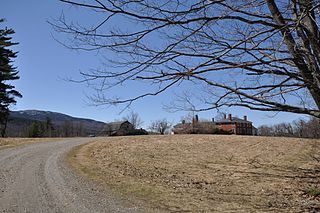
The Eli Morse Farm is a historic farm on Lake Road in Dublin, New Hampshire. It is one of the earliest settlements in the town, settled by Eli Morse in 1764, and has been in the hands of just two families. Its transformation to summer resort use was one of the first in the Dublin Pond area. The farm was listed on the National Register of Historic Places in 1983.

The Power Farmstead is a historic farm located on County Road 9500N east of Cantrall, Illinois. George Power, a prominent early settler of northern Sangamon County, established the farm in the 1820s. The farm includes an intact collection of buildings which represent typical 19th-century farm life. In addition, the original farmhouse served as a local courthouse, as Power was Sangamon County's justice of the peace for two decades; Abraham Lincoln argued his first case in the courthouse. The farm was added to the National Register of Historic Places on May 1, 1989.
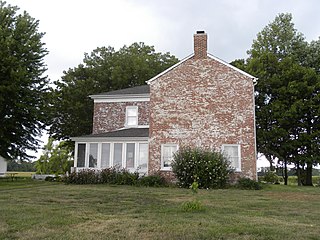
Woodlawn Farm is a historic farm located at 1463 Gerkie Lane east of Jacksonville, Illinois. Michael Huffaker, one of Morgan County's first settlers, established the farm in the 1824 after purchasing a 160-acre plot to the south of Jacksonville, Illinois. Due to the many agricultural innovations of the 1830s, Huffaker earned a significant amount of money from his farm and became one of the county's wealthiest residents. Huffaker mainly raised livestock, particularly cattle and pigs, on his farm; while he also grew crops, the grain mainly served as feed. In 1840, Huffaker built the farmhouse, an I-house with a Greek Revival entrance and frieze, that still stands on the property. According to local tradition, the house was a stop on the Underground Railroad; as Huffaker employed many free black farmhands, he could conceal escaped slaves among his workers.

Cambre House and Farm is a historic farmstead located southwest of Niota, Hancock County, Illinois, United States. The farmhouse was built in 1867 by Adolphe Cambre, a French immigrant and member of Nauvoo's short-lived Icarian community. A carpenter by trade, Cambre designed several of the community's buildings while the Icarians occupied Nauvoo in the 1850s. While many of the Icarians resettled in Corning, Iowa after their Nauvoo colony failed, Cambre remained in Hancock County, eventually building the Creole-inspired house for his family. The house is similar in design to the Icarians' other buildings and is the only surviving Icarian-designed building in Hancock County.
The Duvall–Ash Farmstead is a historic farm located northeast of Fiatt in Fulton County, Illinois. Edward Duvall built the farm's oldest buildings, the house and smokehouse, circa 1848. Duvall gave the farmhouse a Gothic Revival design with multiple front-facing gables decorated with bargeboards and topped by finials. In the 1890s, Singleton K. Ash purchased and extensively renovated the farm. Ash placed a Victorian addition on the rear of the house which featured decorative stickwork and bracketing. In addition, Ash and his family built most of the farm's current outbuildings, which include a chicken coop, barns, and storage sheds; these outbuildings form a complete collection of typical outbuildings from an 1890s farm.
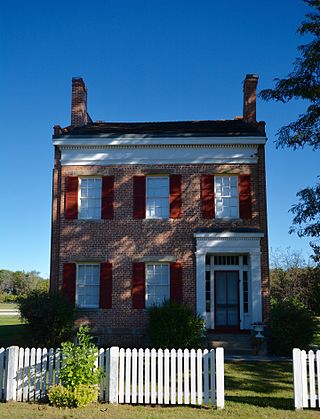
The Edward Pulsifer House is a historic house located on Illinois Route 71 in Hennepin, Illinois. Edward Pulsifer, a prominent Hennepin businessman, had the house built in 1844, four years after he came to the city. Pulsifer began his enterprise by running a general store with his brother; his later ventures included local real estate and a shipping business on the Illinois River. His house is designed in the Federal style and is one of Putnam County's best remaining examples of the style. The 2+1⁄2-story brick house is topped by a gable roof; the brick in the gables forms a projecting coping at the top, and each gable has paired chimneys at its peak. Brick parapets connect the pairs of chimneys, a stylistic element often seen in Federal architecture in Illinois. The entrance and the roof line feature matching dentillated entablatures; the entrance also features a transom, sidelights, and flanking pilasters.

The House at 364 Cedar Avenue was a historic farmhouse located at 364 Cedar Avenue in the city of Long Branch in Monmouth County, New Jersey, United States. Built around 1862, the Greek Revival house was added to the National Register of Historic Places on November 1, 1979, for its significance in agriculture. The house was demolished around 2009.
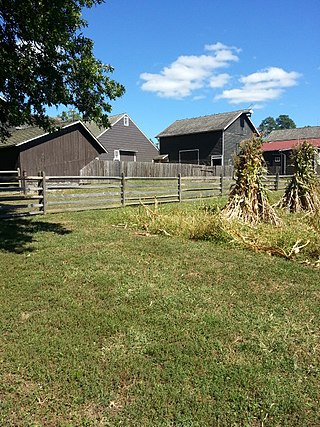
Longstreet Farm is a living history farm located at 44 Longstreet Road in Holmdel Township, New Jersey, United States. The farm is 9 of 664 acres within Holmdel Park. It was added to the National Register of Historic Places on November 29, 1979, for its significance in agriculture and architecture. The listing has 19 buildings, including the farmhouse, which was built from 1790 to 1810.
